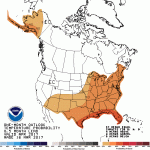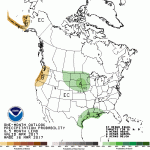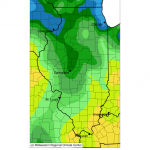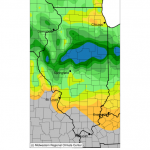7-Day Rainfall (NWS)
Here are the 7-day totals for the central US, capturing the rainfall over the weekend. As forecasted, the heaviest rains were in Missouri and along the IL/MO border. Shades of green represent 0.5 to 2.0 inches.Most of IA, MI, IN, and OH received moderate amounts of rain from this system. However, large parts of Illinois received less than 0.5 inches (shaded in blue).






